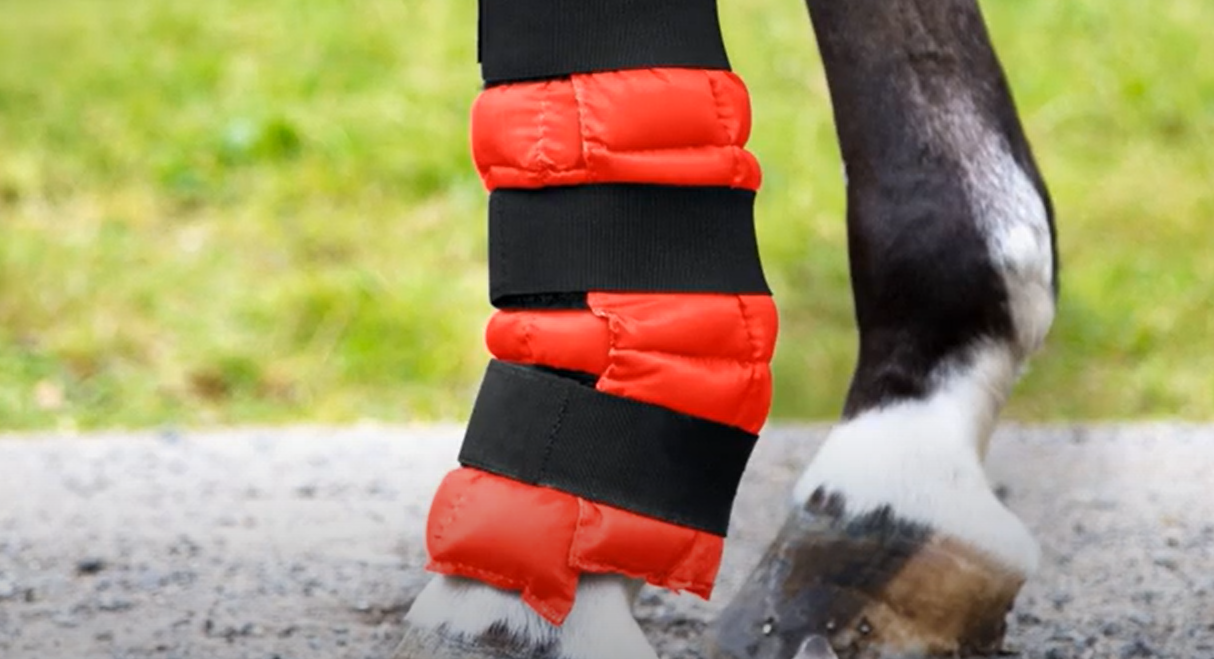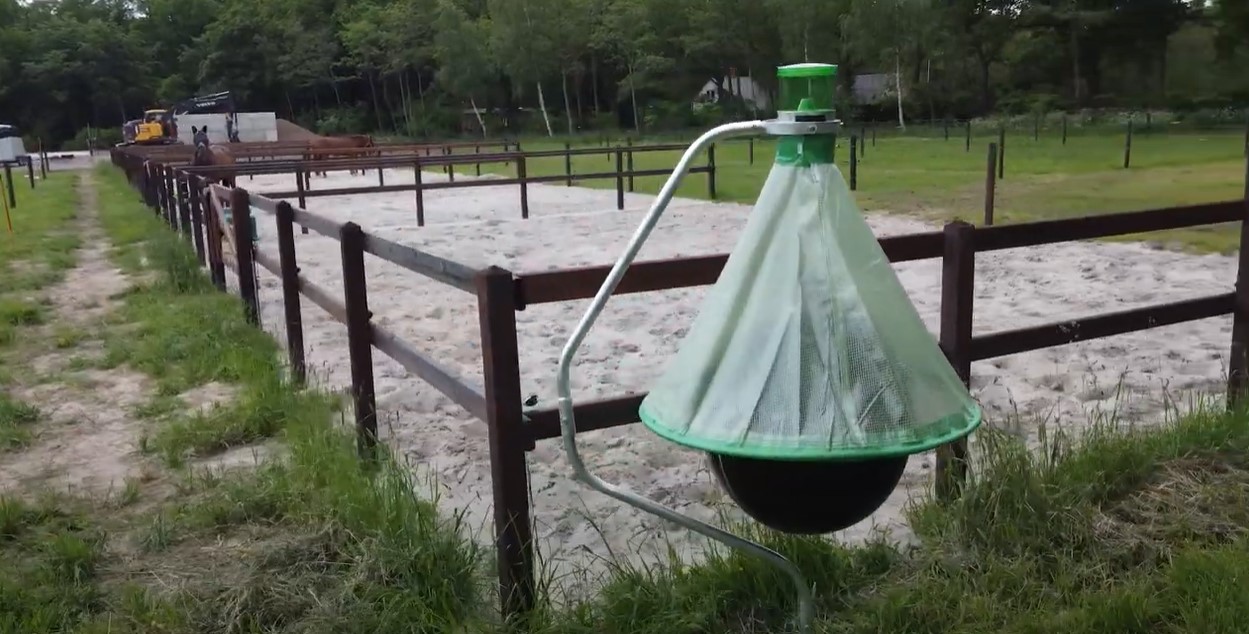Horses are strong, muscular, athletic animals with endless amounts of stamina. This is why we love riding them and taking part in equine competitions. But just like with all athletes in training, sometimes sprains, strains and swellings can occur in the horses' legs. Using a cold treatment on a horse after exercise can help them to recover from minor injuries and to reduce swelling after a workout. Read on to discover everything you need to know about the different types of ice boots and how they work. By following this guide, you'll be sure to find the best horse ice boots for your needs.
What are Ice Boots for Horses?
The best ice boots for horses work in the same way that an ice pack works on humans. They look similar to other types of horse boots but they're designed to hold in place a cold, iced compress against the horse's legs. This compress can help to return the horse's blood flow back to normal after exercising which helps to prevent inflammation and soreness, particularly in the legs. It's for this reason that sports horses will often wear ice boots after performing.
Why are Ice Boots for Horses Important?
The best ice boots for horses can serve many different purposes which is why they're an important piece of equipment to have at the barn. Below we'll take a look at all the different uses for a horse ice boot.
First Aid
When it comes to minor leg injuries, cold treatment is usually the first thing that is administered to a horse. Equine ice boots can be used to help soothe sprains and injuries that can occur in their fine, delicate legs. An ice boot can also be used to help stem the bleeding and soothe inflammation from minor cuts on the horse's legs.
Rehabilitation
Regular ice treatments can help a horse to recover from minor sprains and strains in the legs. Just like in humans you can treat a mild sprain in a horse with a regular, on-off cold pressure. Cold therapy on the legs can help horses that are recovering from a range of tendon and ligament injuries. They can also be used routinely on horses with chronic problems of the leg after exercise.
Preventative
Heat stress in horses is real. It's a fact that the horse's legs become hot during exercise and the harder the workout, the hotter their legs will become. This heat can cause damage in the tendons and ligaments.
Even though this wear and tear may not be obvious, it's slowly building up over time. By icing your horse's legs after exercise, you are reducing this excessive heat in the legs and potentially preventing damage from occurring. This will keep your horse's legs strong and can help prevent injuries and long term problems like chronic lameness and arthritis.
What's the Difference Between an Ice Boot and an Ice Wrap?

Ice boots and ice wraps both provide soothing cold therapy to your horse's legs after exercise. Below we'll take a look at the main differences between the two.
Ice Wraps
Ice wraps tend to be one whole item primarily made up of the cooling material like gel pockets. Usually, the whole wrap will need to be stored in the freezer.
Ice Boots
Boots on the other hand will have pouches and pockets where you can add ice or gel packets. You should choose wraps or boots according to the freezing facilities you have available in your barn.
Do Ice Boots Hurt Horses Legs?
Generally speaking, once they're used to them, a horse will enjoy the relief that ice packs can bring to their hot legs. However, there are some points of caution to be aware of when it comes to using horse cooling boots.
Points of Caution
Just like in humans, placing ice directly onto the skin can cause severe damage, including frostbite. This is why an ice boot should be adequately insulated to protect your horses' skin. Also, the water from the ice mustn't leak onto your horse. This can make the skin very soft and tender and at risk to cuts and injury. Also, prolonged exposure to cold isn't good for your horse's legs so an ice boot shouldn't be left on for more than 40 minutes.
Are Ice Boots Safe?
People have been using ice and cold water to treat their horses' swollen legs for centuries. It's only recently though that the effects of cold therapy have been investigated. The studies have proven that treating your horse with cold water or ice can be a very effective way of recovery from exercise and for treating sprains and strains. As long as they're used correctly, ice boots are not only safe but they're also effective in helping with leg complaints.
Should I Use Ice Boots After Every Ride?
This all depends on your horse and what kind of work you've been doing. If your horse is in rehabilitation or has a chronic long term problem then potentially you may have to ice after each ride. If your horse is fully sound and healthy then you should only ice their legs after a vigorous workout or if you've been riding in heat and humidity. Horses who wear leg bandages during exercise will naturally get hotter legs. If your horse has sweated under the bandages then this is a good idea to ice the legs after you've removed the bandages.
Ice Boot vs Cold Water Therapy

Ice boots aren't the only way to cool down your horse's legs after exercise, many people choose to use cold water therapy in place of ice boots. Below we'll take a look at the pros and cons of cold water therapy compared with ice boots.
The Pros and Cons of Cold Water Therapy
The traditional method for cooling horses' legs is to simply run cold water over them from a hose or to stand their front legs in a bucket of iced water.
Pros
This is a simple, cheap and easy way to apply cold therapy to your horse and can be carried out in any barn, providing there are a hose and running water. Bags of ice are also readily available to buy in most areas.
Cons
However, using this method is very time and water consuming, you'll have to stand there with the hose for an hour while you waste water down the drain.
The Pros and Cons of Ice Boots
An ice boot is the modern, more convenient way to apply cold therapy to your horse but they do come at a cost.
Pros
Ice boots are great because you simply apply the boots and let them do the work leaving you free to get on with other yard work. They provide an overall more effective treatment for your horse, without wasting water. Another good thing about ice boots is that they can be conveniently stored in a cooler box to be taken out on the trail or to a show.
Cons
Ice boots do require an initial investment, with some boots on the market costing hundreds of dollars.
How to Choose the Best Ice Boots for Horses

So that your horse gets the most from its ice treatment then you need to find the most suitable boots for your needs. Below we’ve listed the most important things to consider when it comes to choosing horse ice boots.
Materials
When it comes to looking at the materials of a good pair of ice boots, you should look for durable, insulating, water-resistant fabrics. These will keep the ice colder for longer and will prevent leakage onto your horse's skin. The most common and effective materials to look out for are neoprene and thick nylon denier.
Fastenings
We all have our personal preferences when it comes to horse boot fastenings and this is why you'll find horse ice boots with many different fastening options. Buckles and zippers can offer a more secure fit around a horses legs, however, they can sometimes be cumbersome to apply and remove, especially if you have a twitchy horse. Velcro straps are the preferred fastening for most owners. These are quick and easy to apply and are often more durable than zips or buckles.
Ice vs Gel
Before buying an ice boot you need to consider the facilities at your barn. Do you have a freezer to store your ice boots in or a way of producing sufficient amounts of ice to fill them? If obtaining ice isn’t a problem but you're limited on freezer space then choose an ice boot that will use ice for cooling. If you have plenty of freezer space but no access to ice then choose a boot or wrap that uses gel packs.
Can I Use Homemade Ice Boots for Horses?
Making your own ice boots may seem like a tempting, cheaper solution to buying them. However, a homemade ice boot needs to be very well constructed for it to be safe and effective on your horse. If the boot isn't well made, it may seep liquid onto your horse's legs and even allow the ice to make direct contact with the skin. An ice boot needs to be tough and durable so it’s probably better to opt for professionally made ice boots for your horse.
Reviews of 3 of the Best Ice Boots for Horses
To help you in your search for the best horse ice boots on the market, we've reviewed three of our favorites below to get you started.
1. Tough 1 Ice Boot
These budget boots from Tough 1 are a simple, easy and convenient way to add cold therapy to your horse's leg. They work with gel packs which stay soft when they're frozen meaning that they mold easily to your horse's leg. The boots are made with a durable, heavy denier nylon shell and they're fitted with four quick grip straps giving you complete control over compression. These are a best seller on the marketplace and they are available in three different colors.
2. Professionals Choice Ice Boot
These are popular, value for money ice boots from Professionals Choice that work using insulated, frozen gel pockets. The flexible neoprene exterior and soft nylon lining make them comfortable and durable boots for your horse. They have extended hook strap fastenings for easy application and adjustability, making them perfect for use on both the front and back legs. These boots come with a mesh carry bag as well as a 30-day money-back guarantee from Professionals Choice.
3. Horze Finntack Pro Cooling Ice Wrap For Horse
These ice wraps from Horze provide an easy and effective way to cool your horse's legs down after exercise. They're made with a heavy denier nylon shell which means that they're tough and durable with a long shelf life. They are secured to the leg with for hook and loop fasteners which are easy to apply and provide a comfortable custom fit. The wrap is made up of 24 gel pouches which stay soft even when frozen. These boots are suitable for all sizes and are available in five attractive colours.
Conclusion
When it comes to choosing the best ice boot then we highly recommend the Professionals Choice Ice Boot. Not only do these boots look great, but they’re also super tough and durable. They're available at a very reasonable price and are sure to provide the ultimate for all of your cold therapy needs.
Using the best ice boots on a horse not only relieves immediate stress and swelling, but they can also help to prevent further leg damage in the future. Investing in a good ice boot will save your horses legs and save you lots of time and money in the long run. Even if you don't ride your horses, it's always worth having an ice boot available at your barn in case it’s needed for first aid. By using this guide as a reference, you'll be sure to find the best horse ice boots for your needs.







